RIGGING GUIDELINES
Following are some useful tips to help the rigger do their job more efficiently and safely. Prevailing work rules and government regulations place full responsibility for proper performance upon the rigger, so it is his duty to be familiar with the condition and capability of all tools and equipment used, as well as techniques employed. One basic rule always applies: Always know, never guess! Each lift may be divided into three parts, providing a convenient plan for proceeding:
The Lifting Device
Know its capability and limitations, and its condition. When was it last inspected? If in doubt about capacity, check the placard.
The Hitch
Here is where the rigger can exercise ingenuity, but it's also the easiest place to make a mistake. Our Riggers Handbook can help you decide which sling to use, and how to rig it properly.
The Load
The weight must be known. But you must also protect the load from possible damage by the slings, and protect the slings from damage by the load.
Before you select a sling for a specific lift, determine the most effective hitch to do the job, protect the load, and protect the sling. One of three basic hitches will usually do the job. The type of hitch you select may determine the type of sling body that will best do the job, as well as the length of sling that will be needed. Lifting height, overhead clearance and hook travel will affect choice of hitch and length of sling.

Attaching a Sling to Eyebolts
When attaching a sling to eye bolts, always pull on line with the bolt axis. When hitching to bolts screwed into or attached to a load, a side pull may break the bolts.

Lifting Crates with a Basket Hitch
When lifting crates or wooden boxes with a basket hitch, be sure load can withstand side pressure as tension is applied to sling. Use spreader bars and corner protectors to prevent damage to contents.

Reducing the Angle of a Choke
You can reduce the angle of a choke with a wooden block, or blocks, between the hitch and the load. This also increases the angle between the two legs to improve sling efficiency.

Use a Tagline to Prevent Load Rotation
Anytime a load is lifted beyond arm's reach with a single-part load line or straight eye and eye sling, use a tagline to prevent load rotation. If a wire rope is permitted to rotate, the strands may unlay and the rope's capacity will be reduced.

Is the Lifting Device Adequate?
Check the placard on the crane or hoist and then answer three questions:
- Is the capacity adequate for this lift?
- Will it lift high enough?
- Is horizontal reach adequate?

Proper Sling Body Selection
Choose a sling body type which will best support the load while providing adequate rated capacity. The proper choice will provide:
- Lifting capacity needed.
- Proper D/d ratio.
- Handling characteristics needed for rigging.
- Minimal damage to the sling.
- Minimal damage to the load.

Protecting Sling Body Against Excessive Distortion
Use a shackle in the sling eye during a choke to protect sling body against excessive distortion. Always put shackle pin through sling eye, rather than against the sling body since sliding movement of sling body could rotate pin, causing it to come loose.

Use a Choke Hitch When Lifting a Bundled Load
When lifting a bundled load with a single sling near the center of gravity, a choke is more effective than a basket hitch to prevent unbalance and slipping of the load in the sling.

Rigging with Multiple Straight Slings
When rigging two or more straight slings as a bridle, select identical sling constructions of identical length with identical previous loading experience. Normal stretch must be the same for paired slings to avoid overloading individual legs and unbalancing the load during the lift.

Rigging with Multiple Basket Hitches
Two basket hitches can be rigged with two slings to provide better balance for long loads. Be sure that slings cannot slide toward one another along the load when the lift is made.

Checking the Hook and Reeving
- Are the sheaves properly rigged? If multi-part reeving, will it support the load?
- Is the hook the right size so sling eye won't be distorted when put over the hook?
- Check for cracks in bowl of the hook, and for evidence of point loading or bending to one side.

Use a Spreader Bar to Prevent Excessive Side Pressure
Use a spreader bar between legs of a sling to prevent excessive side pressure on the load by the sling during the lift.

Use Padding to Protect Fragile Items
Use blocking or padding to protect hollow vessels, loose bundles and fragile items from scuffing and bending. Remember that blocking becomes part of the lift, and must be added to total weight on the sling

Double Wrap to Prevent Slippage
Some riggers will use a double wrap around the load, for 360° gripping of the load, to prevent slippage during the lift.

Hand-Spliced Slings Must Not Rotate in a Vertical Hitch
Single-part hand-spliced slings must not be permitted to rotate when rigged in a straight, vertical hitch. Rotation can cause the splice to unlay and pull out, resulting in dropping of the load.

Keep Loads Level with an Equalizer Bar
Use an equalizing bar with double basket hitches to reduce tendency of slings to slide together, and to keep loads level. By adjusting the hook point and using a come-along or chain block to support the heavy end, the load can be kept level during the lift.
Proper Use of Cribbing






































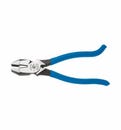 Klein® D2000-9ST 2000 Heavy Duty Rebar Work Cutting Plier, 9-3/8 in OAL
Klein® D2000-9ST 2000 Heavy Duty Rebar Work Cutting Plier, 9-3/8 in OAL
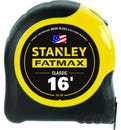 Stanley® FatMax® 33-716 Reinforced Tape Rule with BladeArmor®, 16 ft L x 1-1/4 in W Blade, Mylar® Polyester Film Blade
Stanley® FatMax® 33-716 Reinforced Tape Rule with BladeArmor®, 16 ft L x 1-1/4 in W Blade, Mylar® Polyester Film Blade
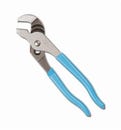 Channellock® 426 Tongue and Groove Plier, 7/8 in Nominal, 3/4 in L C1080 High Carbon Steel Straight Jaw, 6-1/2 in OAL
Channellock® 426 Tongue and Groove Plier, 7/8 in Nominal, 3/4 in L C1080 High Carbon Steel Straight Jaw, 6-1/2 in OAL
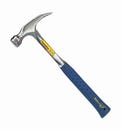 Estwing® E324S Framing Hammer, 16 in OAL, Smooth Surface, 24 oz Steel Head, Straight Claw, Steel Handle
Estwing® E324S Framing Hammer, 16 in OAL, Smooth Surface, 24 oz Steel Head, Straight Claw, Steel Handle
 Mayhew™ 62065 X-Long Pin Punch Kit, Hex Shank, 9-1/2 in OAL, 5 Pcs
Mayhew™ 62065 X-Long Pin Punch Kit, Hex Shank, 9-1/2 in OAL, 5 Pcs
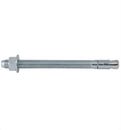 DeWALT® Power-Stud®+ Powers® 7449SD1-PWR Expansion Wedge Anchor, 3/4 in dia, 10 in OAL, 7-1/2 in L Thread, Carbon Steel, Zinc Plated
DeWALT® Power-Stud®+ Powers® 7449SD1-PWR Expansion Wedge Anchor, 3/4 in dia, 10 in OAL, 7-1/2 in L Thread, Carbon Steel, Zinc Plated
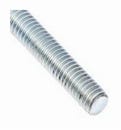 BBI® 777037 All Threaded Rod, 3/8-16, 12 ft OAL, Steel Alloy
BBI® 777037 All Threaded Rod, 3/8-16, 12 ft OAL, Steel Alloy
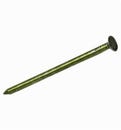 Primesource® 8CTDSKR Sinker Nail, 17/64 in, 2-3/8 in L, 9 ga, Vinyl Coated, Smooth Shank
Primesource® 8CTDSKR Sinker Nail, 17/64 in, 2-3/8 in L, 9 ga, Vinyl Coated, Smooth Shank
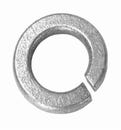 BBI® 754072 Medium Split Lock Washer, 1/2 in Nominal, 18-8 SS
BBI® 754072 Medium Split Lock Washer, 1/2 in Nominal, 18-8 SS
